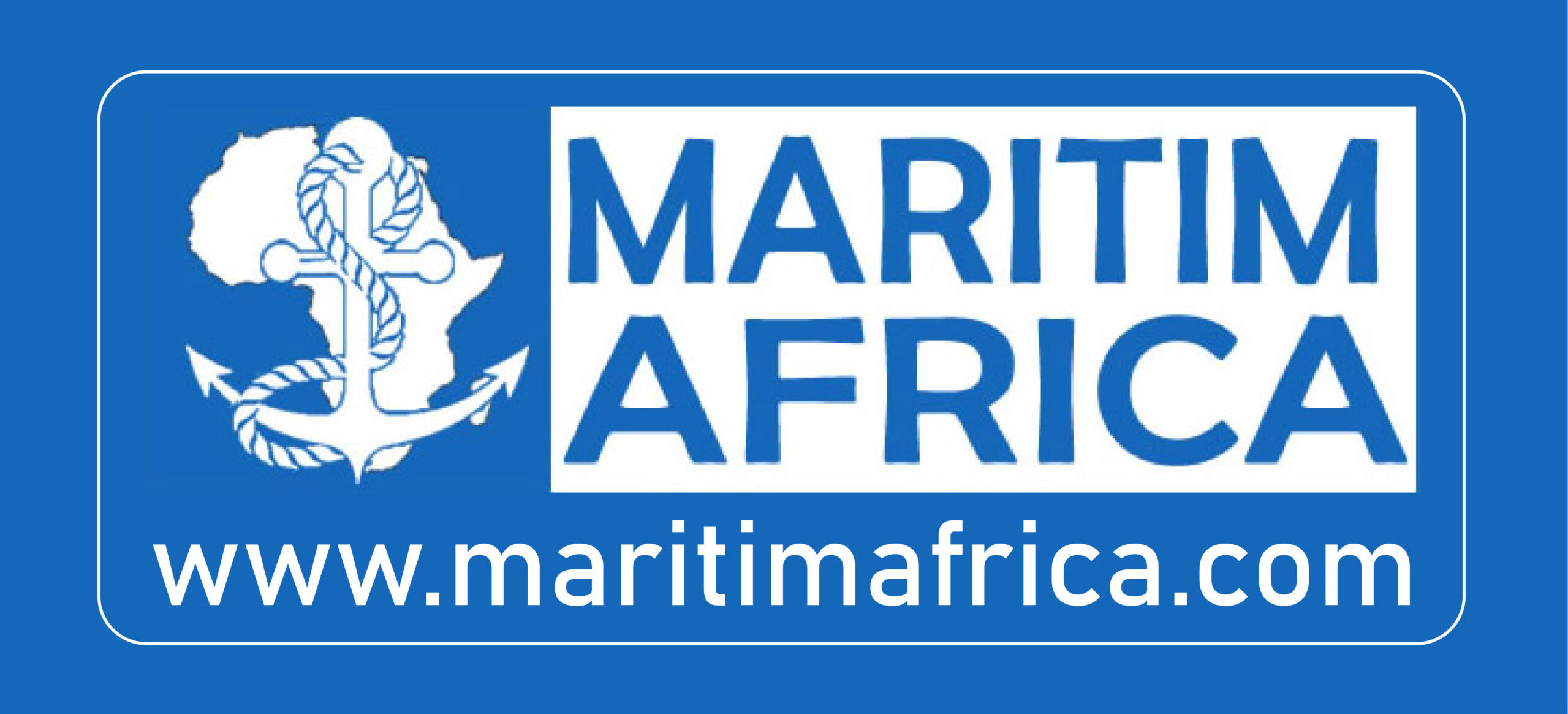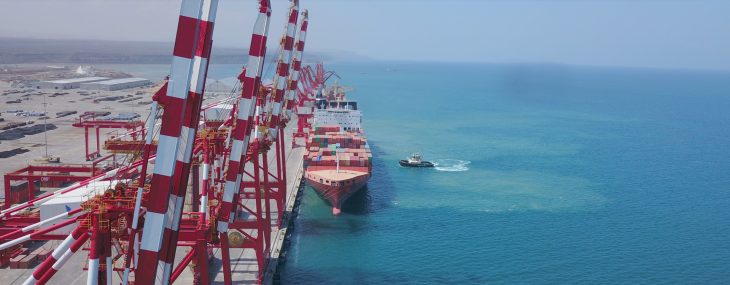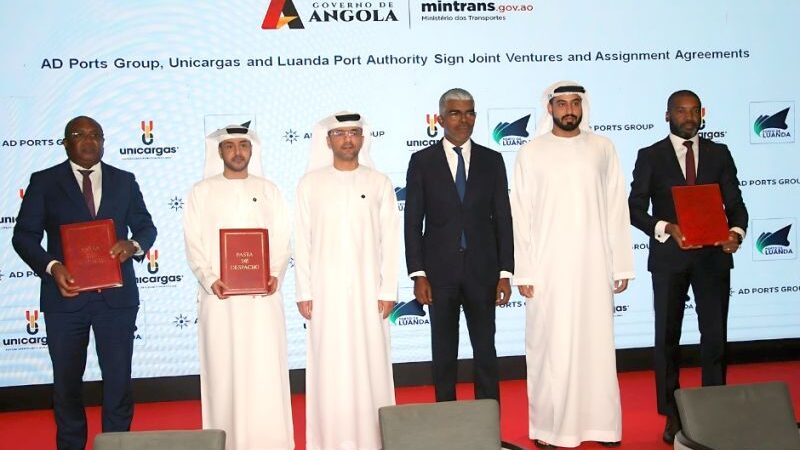Tracking, tracing and transparency: Djibouti PCS smooths the flow of vital cargo and documentation across the border into Ethiopia
 A package of digital solutions introduced by Djibouti Port Community System (DPCS) is proving transformational for the flow of cargo through its ports and across the border into landlocked Ethiopia.
A package of digital solutions introduced by Djibouti Port Community System (DPCS) is proving transformational for the flow of cargo through its ports and across the border into landlocked Ethiopia.
About 90% of Ethiopia’s imports pass through Djibouti’s ports and a key focus of DPCS has been providing as much transparency and visibility as possible to the final customers who, of course, are in another country entirely.
First launched in July 2018, Djibouti Port Community System, an active member of IPCSA, covers the ports of SGTD Container Terminal (former DCT), Doraleh Multipurpose Port and the Port of Tadjourah. Before its implementation, all Djibouti ports, Customs and government agencies had their own separate systems. Since 2018, DPCS has developed rapidly.
“We have two main strategies driving our PCS implementation,” says Warsama Guirreh, CEO of DPCS. “Due to our location, we have about 30,000 vessels passing our coast every year; Djibouti Ports and Free Zones Authority is working to create an interconnected International Maritime Centre, investing in ports, in feeder services and in bunkering on the high seas, with the aim of attracting more liner services into our ports. Secondly, we are working to further improve the transit services provided to our neighbour, Ethiopia. The focus of our PCS has a lot to do with tracking and tracing; we have to provide as much transparency and visibility to the final customers as we can. After all, we have seen more than US$1.2 billion of investment in creating logistics and trade infrastructure in Djibouti – building digital services to improve the efficiency of those infrastructure is an essential component of that investment.”
In respect of the first strategy, Djibouti PCS is compliant with IMO FAL recommendations. The seven FAL Forms are submitted electronically to ease vessel documentation submission. Other maritime e-services that have contributed to a considerable increase in efficiency include electronic berth requests and vessel clearance e-certificates.
DPCS is also connecting all the different stakeholders – ports, shipping lines, forwarders, Customs – to provide a 360-degree view of cargo and documentation flows. “We are tracking the cargo to identify when it has been unloaded at the port, position of the container within the yard, gate-in/gate-out and at the same time tracking the documentation process – including e-do, port fees invoice, clearance, booking collection of the cargo, etc.,” says Warsama. “Recently we have integrated Djibouti Corridor agency (DPCR) systems to provide ‘check points’ where the customer can follow the truck and its cargo all the way to Ethiopia. This is done through a QR Code scan of the DPCR ticket along the corridor.”
With the addition of this latest functionality, importers/exporters from Ethiopia can follow their trucks in Djibouti, verify the cargo that the trucks are transporting and investigate any delays on deliveries by tracking operations and documentation activities associated with their trucks. The shippers can also use this tracking and data availability to improve services and cut out unnecessary costs. Having said that, it’s important to emphasise that DPCS is not physically stopping anyone from doing anything; the transparency is there for the community to make use of.

This tracking capability has generated a lot of interest from the Federal Transport Authority of Ethiopia, whose transport department contacted DPCS with a view to integrating systems to provide full tracking and visibility of Ethiopia-based trucks, from starting their journey, through loading goods at the port to crossing the border and final delivery.
“From our side, we wanted more information about the transport companies and drivers registered in Ethiopia,” says Warsama. “Initially, we had no way of knowing whether transport companies were legitimate and registered in Ethiopia, even if they said that they were. Through this integration, the Ethiopian government provides full information on the truckers that are heading our way.
“Our biggest objective is reducing the time and cost of logistics. We have demonstrated that just through digitalisation, existing customers have been able to save four to five hours on each consignment. Where there were nine manual processes, we have reduced this down to five, all electronic. Now, we expect documentation to be finalised within an hour.”
By continuing to analyse data, DPCS’ relevant stakeholders have been able to identify bottlenecks, assess customer behaviour and adjust processes accordingly.
“Since we have been working for almost three years, we have had access to a great deal of data – basically anything that comes into Djibouti, delivery data, gate in/out – and that data is becoming more and more valuable,” says Warsama. “We are in a position to take better decisions that can significantly improve the logistics chain and our services.
“Following the integration with Customs system Asycuda, Djibouti PCS has been operating as the sole submission platform for all manifest and e-do operations in Djibouti. This year, we also aim to finalise the Customs declaration submission functionality and the integration with the rail operator.”
Is all of this encouraging cargo volumes into Djibouti? Warsama says yes – efficiency and cargo flows are interlinked.
“Better service means more business,” he says.
For example, sometimes containers spend more time in ports due to a delay in the documentation. “With Djibouti PCS, we are able to find out the source of this delay within the logistics chain. Better coordination and increased transparency resolve these types of issues and increase the flow of cargo in the logistics chain. This integrated digital service helps the importer to plan the whole process of retrieval of cargo. It is more efficient and cheaper for the importer and more efficient for us, because the cargo is moving faster.”
And there are certainly new opportunities ahead. Djibouti is in discussions with South Sudan and other landlocked countries. “Ethiopia is keen to become a transit country itself, using Djibouti ports and delivering goods all the way to South Sudan and into central Africa,” explains Warsama. “This has been a long dream of both Djibouti and Ethiopia. For this, we need to be very efficient and provide exceptionally good logistics services for customers choosing to use the Djibouti ports.
“Everyone is realising the potential of the landlocked countries of Africa and corridors to the seaports. Djibouti’s population is less than one million, but we have five ports – they aren’t only for us but for other countries.”
None of this has been without its challenges, of course. Warsama highlights one of the more usual difficulties – encouraging people and businesses to get involved, to share information and to trust each other.
“Getting people involved was definitely very challenging, especially at the beginning when we had to explain that this would help the whole port community. We started with port bookings, invoicing and gate in/out; as we convinced and integrated a party, we built on the achievements in order to continue and extend the influence of the system. Even now we sometimes have forwarders who still come to the port requesting a physical invoice, but 90% of them are using the system and doing everything from their offices.”
In all of this, DPCS has benefited from its membership of IPCSA, says Warsama. “Every single problem we have had, there is a member of IPCSA who has been there before us and has been able to provide advice and support,” he says.
And he is full of optimism: “There is still a long way to go and a lot of improvements to make but we are heading in the right direction.”
Source : IPCSA




